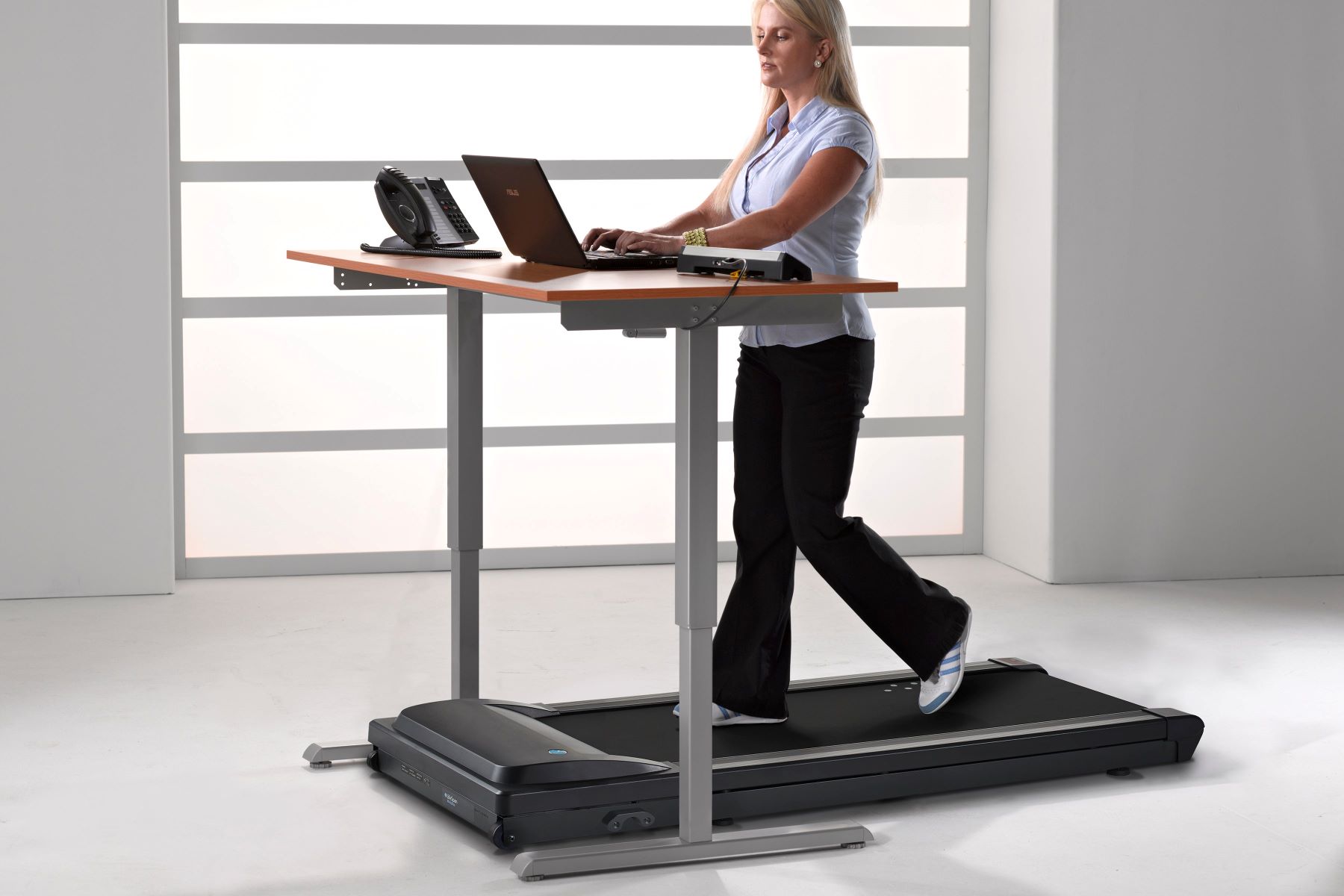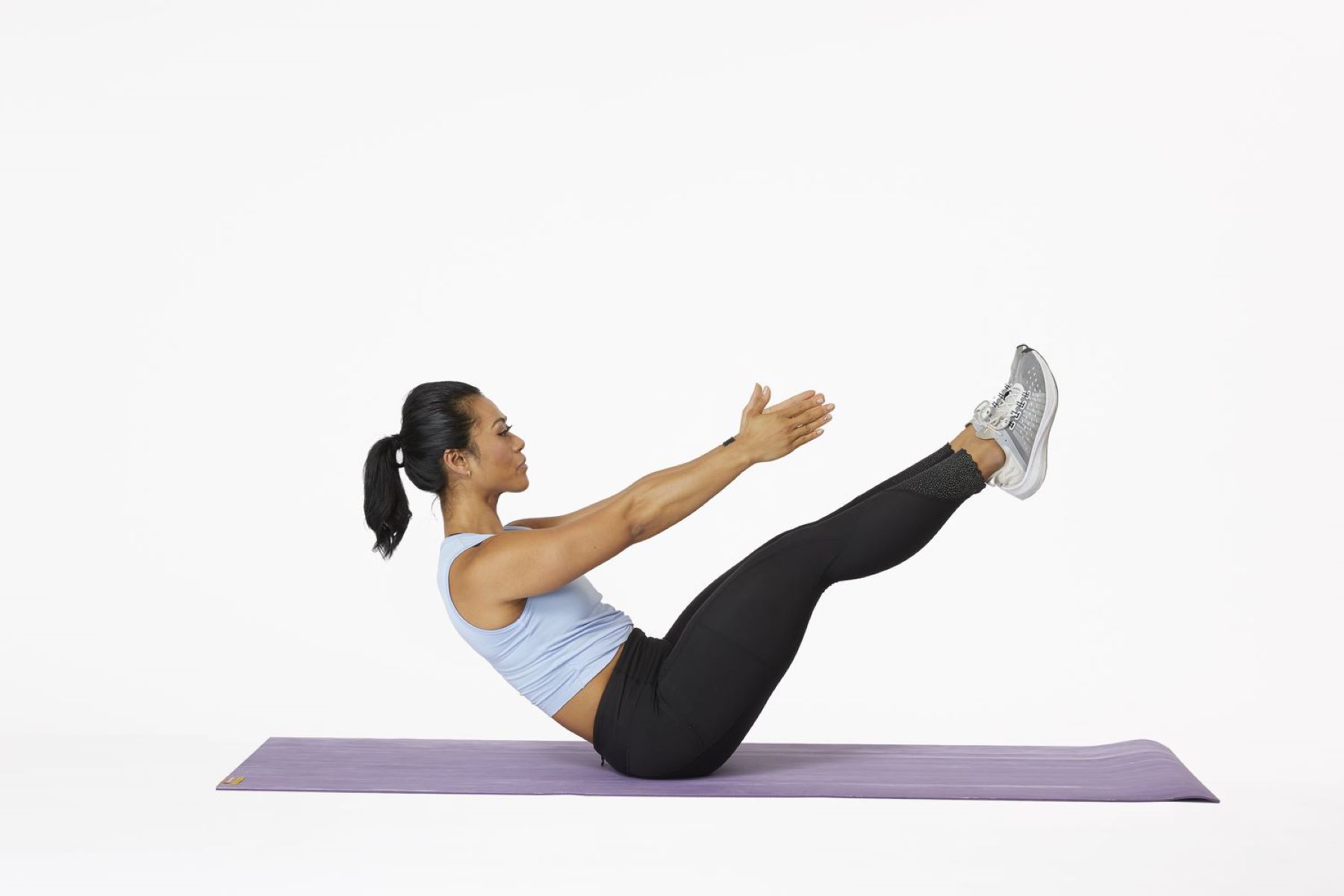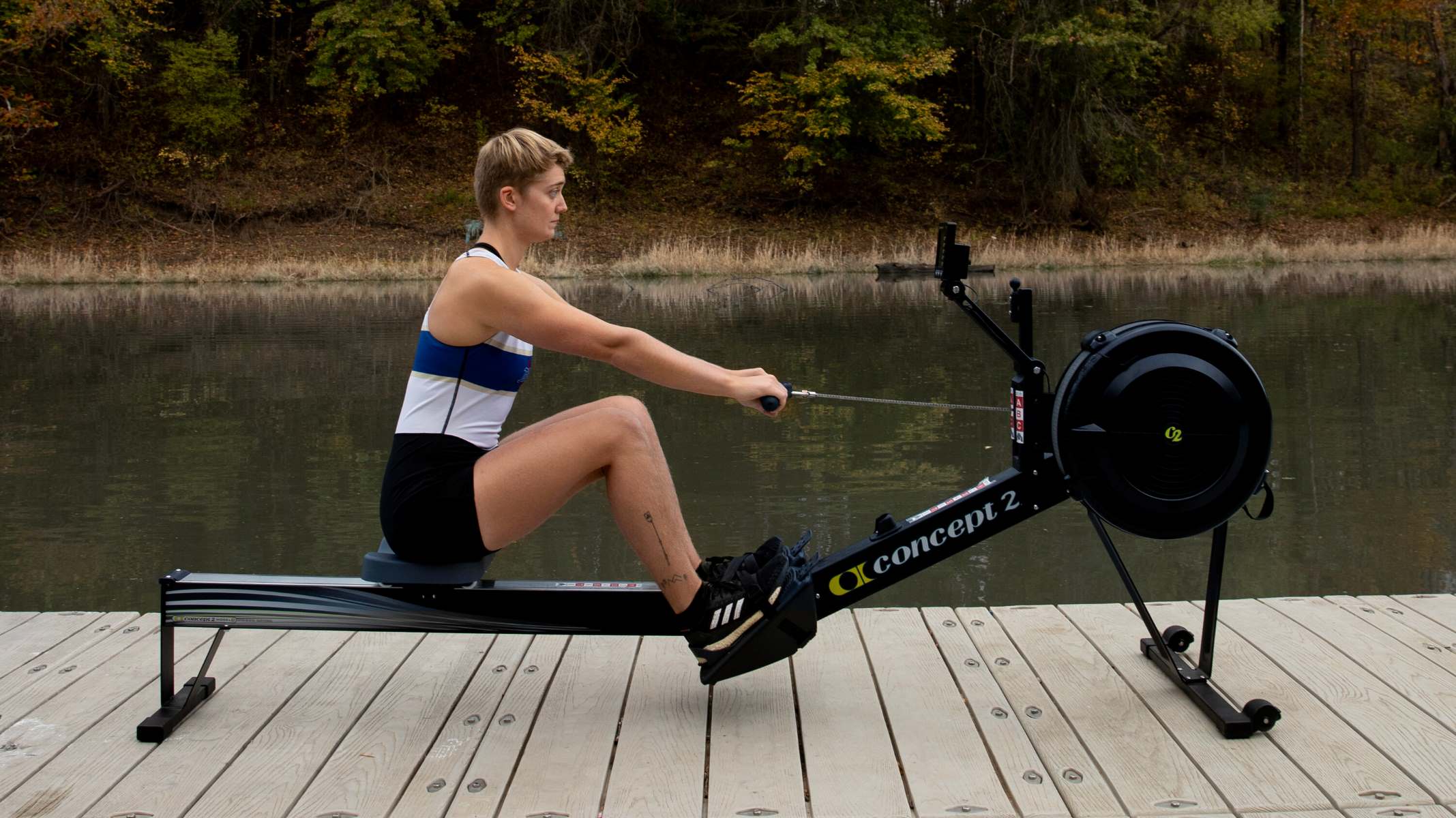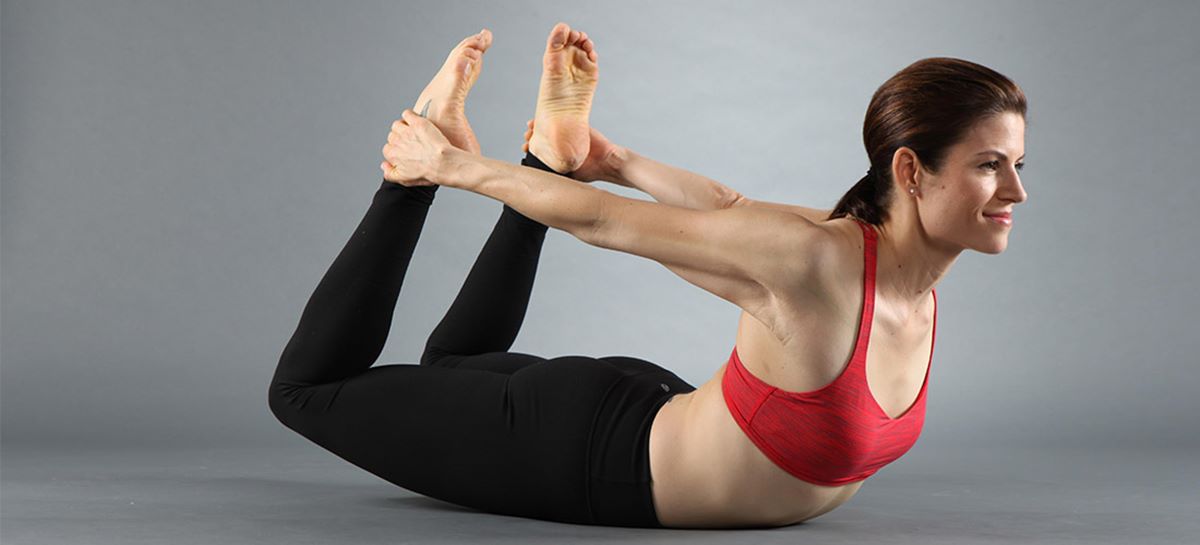

Featured
What Is A Treadmill Desk
Modified: August 21, 2023
Discover the benefits of a featured treadmill desk and how it can improve your health and productivity while working from home or office.
Introduction
Welcome to the world of treadmill desks, where walking and working seamlessly blend together to create a healthier and more productive lifestyle. In today’s sedentary society, many people find themselves spending countless hours sitting at a desk, leading to a host of health issues such as obesity, back pain, and decreased cognitive function.
Treadmill desks offer a revolutionary solution to combat the negative effects of prolonged sitting. By combining the benefits of walking with the convenience of a traditional workspace, these innovative desks allow individuals to stay active while they tackle their daily tasks.
A treadmill desk is essentially a workstation that incorporates a treadmill, providing an adjustable walking surface that enables users to walk and work simultaneously. It typically consists of a height-adjustable desk with a built-in treadmill base, allowing users to walk at a comfortable pace while performing their work-related activities.
The concept behind a treadmill desk is simple: replace hours of sedentary sitting with gentle movement. Walking has long been recognized as a fundamental activity that supports overall health and well-being. By incorporating walking into your work routine, you can enjoy the numerous benefits of physical activity without sacrificing productivity.
Incorporating a treadmill desk into your daily work routine can have a transformative impact on your health. Research has shown that using a treadmill desk can increase calorie expenditure, improve cardiovascular fitness, and reduce the risk of chronic diseases. Moreover, it can enhance focus, mood, and creativity.
However, it is important to note that using a treadmill desk may not be suitable for everyone. It requires a period of adjustment, as walking while working may take some getting used to. Additionally, there are certain considerations and safety precautions to keep in mind to ensure a safe and comfortable experience.
In this article, we will explore the benefits and drawbacks of using a treadmill desk, the factors to consider before getting one, as well as alternative options for those who may not be ready to make the leap to a full-fledged treadmill desk. So, let’s dive in and discover how a treadmill desk can revolutionize the way you work and improve your overall well-being.
What is a Treadmill Desk?
A treadmill desk is a unique combination of a traditional desk and a treadmill. It is designed to enable individuals to walk at a slow pace while working on their computers, reading, or performing other office tasks. The idea behind a treadmill desk is to incorporate physical activity into daily work routines, countering the negative health effects of a sedentary lifestyle.
Typically, a treadmill desk is equipped with a height-adjustable desk that can be customized to suit individual preferences and ergonomic needs. The treadmill component consists of a walking platform or belt that operates at a slow speed, allowing users to engage in light physical activity throughout the day.
The walking surface of a treadmill desk is carefully designed to promote comfort and safety. It features a cushioned surface to reduce impact on joints, and some models even incorporate shock absorption technology. The speed of the treadmill can usually be adjusted to accommodate different walking speeds, ensuring a comfortable and personalized experience for the user.
Treadmill desks are available in a variety of configurations, ranging from standalone units that can be placed in any office space to attachments that can be added to existing desks. Some treadmill desks also include additional features such as built-in display consoles to track workout metrics, USB ports for charging devices, and even integrated speakers for entertainment while walking.
The concept of the treadmill desk is rooted in the belief that physical activity and productivity can coexist. By incorporating low-intensity exercise into the workday, individuals can enhance their overall health while simultaneously completing their work tasks. Walking has been scientifically proven to have numerous benefits for physical and mental well-being, making the treadmill desk an appealing option for those looking to improve their work-life balance.
It’s worth noting that a treadmill desk is not intended for intense cardio workouts or running. The purpose is to engage in light activity, such as walking, to counteract the sedentary nature of office work. The goal is to break up long periods of sitting and promote movement throughout the day.
In the next section, we will explore the benefits of using a treadmill desk and how it can positively impact your health and productivity. So, let’s dive in and discover the advantages of this innovative workspace solution.
Benefits of Using a Treadmill Desk
Using a treadmill desk offers a multitude of benefits that can significantly improve your health, well-being, and productivity. Let’s explore some of the key advantages:
- Increased Physical Activity: One of the primary benefits of using a treadmill desk is the opportunity to increase your level of physical activity. Walking at a slow pace while working engages your muscles, boosts your heart rate, and burns calories. This can help combat the negative health effects of prolonged sitting, such as weight gain, muscle stiffness, and poor circulation.
- Improved Cardiovascular Health: Walking on a treadmill desk promotes cardiovascular fitness. Regular walking has been proven to lower the risk of heart disease, reduce blood pressure, and improve overall cardiovascular health. Incorporating walking into your work routine can have a long-term positive impact on your heart health and well-being.
- Enhanced Energy and Focus: Engaging in light physical activity, such as walking, releases endorphins—the feel-good hormones. This can boost your energy levels and improve your focus and concentration. Studies have shown that using a treadmill desk can enhance cognitive performance, memory, and creativity.
- Weight Management: The combination of increased physical activity and calorie expenditure can aid in weight management or weight loss goals. Walking on a treadmill desk burns more calories compared to sedentary desk work, making it an effective tool to support your weight management efforts.
- Reduced Risk of Chronic Diseases: Regular exercise, even in the form of light walking, has been shown to lower the risk of chronic diseases such as type 2 diabetes, certain types of cancer, and metabolic disorders. Incorporating a treadmill desk into your daily work routine can significantly contribute to your overall health and well-being.
- Improved Posture and Musculoskeletal Health: Sitting for prolonged periods can lead to poor posture and musculoskeletal issues such as back pain, neck strain, and tight muscles. Walking on a treadmill desk encourages better posture and engages key muscles, promoting better spinal alignment and reducing the risk of developing musculoskeletal conditions.
- Increased Productivity: Contrary to what you may think, using a treadmill desk can actually enhance productivity. The improved blood flow and oxygenation to the brain can boost mental clarity, focus, and creativity. It can also help combat the mid-afternoon slump and increase overall work efficiency.
These are just a few of the many benefits of using a treadmill desk. Incorporating movement into your work routine can have a profound impact on your physical health, mental well-being, and work productivity. In the next section, we will discuss some of the drawbacks and considerations to keep in mind before getting a treadmill desk.
Drawbacks of Using a Treadmill Desk
While there are numerous benefits to using a treadmill desk, it’s important to consider some of the potential drawbacks that may come with this innovative workstation. Here are a few notable drawbacks to keep in mind:
- Initial Adjustment Period: Transitioning from a traditional desk to a treadmill desk may require an adjustment period. Walking while working can feel unfamiliar and may require some time to get used to. It’s important to start with short walking sessions and gradually increase the duration as your body adapts.
- Reduced Fine Motor Skills: Walking on a treadmill desk can impact your fine motor skills, such as handwriting or performing intricate tasks that require precise hand-eye coordination. Tasks that involve delicate movements may be more challenging while walking, so it’s important to consider the nature of your work before opting for a treadmill desk.
- Noisy Workspace: Treadmill desks can generate some noise from the motor and the movement of the walking surface. Depending on the specific model, this noise can be a distraction or may require adjustments to your work environment to minimize disruptions.
- Potential for Reduced Work Efficiency: While many users report increased focus and productivity while using a treadmill desk, it’s important to recognize that certain tasks may require a more stationary work environment. Activities that demand intense concentration or involve reviewing detailed documents may be more challenging while walking. It’s important to strike a balance and find the right work tasks that are best suited for a treadmill desk.
- Higher Cost: Treadmill desks tend to be more expensive compared to traditional desks. The cost of the treadmill component, height-adjustable features, and additional functionalities can add to the overall price. It’s important to consider your budget and the return on investment in terms of improved health and productivity.
- Space Requirements: Treadmill desks take up more space compared to standard desks. Depending on the model, you may need a dedicated area for the treadmill, which can limit flexibility in workspace configuration. It’s important to assess your available space and ensure the treadmill desk fits comfortably in your office or work area.
While these drawbacks should be taken into consideration, they can often be mitigated with proper planning, adjustments, and understanding of your specific work requirements. In the next section, we will explore important considerations to keep in mind before getting a treadmill desk.
Considerations Before Getting a Treadmill Desk
Before investing in a treadmill desk, there are several important considerations to keep in mind. These factors will help you determine whether a treadmill desk is the right fit for your work environment, needs, and preferences. Here are some key considerations to consider:
- Space: Evaluate the available space in your office or workspace. Treadmill desks require more room than traditional desks due to the treadmill component. Ensure that you have enough space to accommodate the desk and can comfortably move around while using the treadmill.
- Height Adjustability: Look for a treadmill desk that offers adjustable height options. Proper ergonomics is essential for comfortable and efficient work. Make sure the desk can be adjusted to your specific height and allows for proper alignment of your wrists, elbows, and computer screen.
- Noise Level: Consider the noise level of the treadmill desk, especially if you work in a shared or quiet environment. Look for models that operate quietly and choose a location in your workspace where the noise will have minimal impact on your concentration and productivity.
- Work Tasks: Think about the type of work you typically engage in. If your work involves tasks that require fine motor skills, intense concentration, or a stationary workspace, a treadmill desk may not be the most suitable option. Assess whether your work tasks can be comfortably accomplished while walking on a treadmill.
- Budget: Determine your budget for a treadmill desk. They can range in price depending on the features and functionalities offered. Consider the return on investment in terms of improved health, productivity, and overall well-being.
- Health Considerations: Consult with your healthcare provider if you have any pre-existing health conditions or concerns that may impact your ability to use a treadmill desk. It’s important to ensure that using a treadmill desk is safe and suitable for your specific health needs.
- Integration with Existing Workstation: Consider whether you want a standalone treadmill desk or an attachment that can be added to your existing desk. Assess how the treadmill desk will fit within your current work setup and whether it can be seamlessly integrated into your workspace.
By taking these considerations into account, you can make an informed decision about whether a treadmill desk is the right choice for you. It’s important to weigh the benefits and drawbacks, and assess how a treadmill desk aligns with your work style, work tasks, and workspace limitations. In the next section, we will discuss tips for using a treadmill desk safely.
How to Use a Treadmill Desk Safely
When using a treadmill desk, it is important to prioritize safety to ensure a comfortable and injury-free experience. Here are some essential tips for using a treadmill desk safely:
- Start Slowly: Begin with short walking sessions and gradually increase the duration and intensity over time. This will allow your body to adapt to the movement and reduce the risk of strain or injury.
- Use Proper Footwear: Wear supportive and comfortable shoes while using a treadmill desk. Opt for sneakers or walking shoes that provide adequate cushioning and stability to protect your feet and reduce the risk of foot or leg discomfort.
- Maintain Proper Posture: Stand tall and maintain proper posture while walking. Keep your shoulders back, head aligned with your spine, and engage your core muscles. Avoid slouching or leaning on the desk for support.
- Take Breaks: Listen to your body and take regular breaks when needed. If you feel tired or experience any discomfort, pause or step off the treadmill and rest. It’s important to listen to your body’s signals and avoid overexertion.
- Keep Hydrated: Stay hydrated by having water nearby and taking sips regularly. Walking on a treadmill can cause increased perspiration, so it’s important to replenish fluids to maintain proper hydration levels.
- Monitor Speed and Intensity: Select a comfortable walking speed that allows you to perform your work tasks without excessive strain. Avoid setting the speed too high or challenging yourself beyond your fitness level.
- Use Safety Features: Familiarize yourself with the safety features of your treadmill desk, such as emergency stop buttons or safety clips. Be aware of their location and functionality in case of any unexpected events.
- Clear Workspace: Ensure that your workspace is free from clutter or obstacles that may interfere with your walking or cause accidents. Keep cables, equipment, and other objects organized and out of the way.
- Stay Focused: Concentrate on your work tasks and maintain awareness of your surroundings while using the treadmill desk. Avoid distractions that could compromise your safety, such as using mobile devices excessively or multitasking excessively.
- Consult a Professional: If you have any concerns or pre-existing health conditions, consult with a healthcare professional or a qualified fitness expert before using a treadmill desk. They can provide personalized guidance and recommendations for safe usage based on your individual circumstances.
By following these safety tips, you can enjoy the benefits of a treadmill desk while minimizing the risk of injury or discomfort. Remember to listen to your body, take breaks when needed, and prioritize your well-being while using a treadmill desk.
In the next section, we will explore alternative options for those who may not be ready to invest in a treadmill desk but still want to incorporate movement into their work routine.
Alternatives to Treadmill Desks
If a treadmill desk is not a feasible or suitable option for you, there are several alternative solutions available to incorporate movement into your work routine. Here are a few alternatives to consider:
- Standing Desk: A standing desk allows you to work in an upright position, reducing the amount of time spent sitting. Standing while working engages your muscles and promotes better posture. Stand for short periods throughout the day or invest in an adjustable standing desk to switch between sitting and standing positions.
- Active Breaks: Take frequent active breaks throughout the day. Set a timer to remind yourself to get up and move around every hour. Incorporate stretches, short walks, or simple exercises to break up long periods of sitting and promote circulation.
- Exercise Ball Chair: Swap your traditional office chair for an exercise ball chair. Sitting on an exercise ball engages your core muscles and promotes better posture. It also allows for small movements and helps improve balance and stability.
- Walking Meetings: Instead of having meetings in a stationary conference room, opt for walking meetings. Take a stroll outdoors or around the office while discussing ideas or making decisions. Walking meetings not only add physical activity but also stimulate creativity and promote a more relaxed and informal atmosphere.
- Active Desk Accessories: Consider using active desk accessories such as balance boards, under-desk ellipticals, or pedal exercisers. These devices allow you to engage in low-intensity movements while working at your desk. They are compact and can be easily incorporated into your workspace.
- Workplace Movement Challenges: Encourage movement among your colleagues by organizing workplace movement challenges. Set goals and rewards for achieving a certain number of steps or active minutes throughout the day. This promotes a culture of movement and accountability within the workplace.
- Outdoor Breaks: Take advantage of your lunch break or other scheduled breaks to get outside and move. Go for a brisk walk, jog, or bike ride to get some fresh air and invigorate your mind and body. The change of scenery and exposure to nature can have a positive impact on your overall well-being.
Remember, the key is to find an alternative that fits your preferences, work environment, and personal needs. Experiment with different options and find what works best for you in terms of promoting movement and reducing sedentary behavior.
Incorporating any form of physical activity into your work routine, even if it’s outside of traditional exercise methods, can have a positive impact on your overall health, well-being, and productivity. So, explore these alternatives and find the right fit for your active work style.
In the next section, we will conclude our discussion on treadmill desks and summarize the key points covered in this article.
Conclusion
Treadmill desks offer a unique and innovative solution to combat the negative effects of a sedentary work environment. Incorporating movement into your daily work routine can enhance your physical health, mental well-being, and overall productivity. By walking while you work, you can experience numerous benefits such as increased physical activity, improved cardiovascular health, enhanced focus and creativity, weight management, and reduced risk of chronic diseases.
However, it’s important to consider the drawbacks and important considerations before investing in a treadmill desk. Factors such as space, budget, work tasks, and health considerations should be taken into account to ensure a suitable and safe fit for your specific needs.
If a treadmill desk isn’t feasible or preferred, there are alternative solutions available. Standing desks, active breaks, exercise ball chairs, walking meetings, active desk accessories, workplace movement challenges, and outdoor breaks are all viable options to incorporate movement into your work routine.
Ultimately, the goal is to find an approach that works best for you, promotes movement, and reduces sedentary behavior. Whether you choose a treadmill desk or an alternative solution, the key is to prioritize your well-being and create a more active and healthy work environment.
So, take that first step towards a healthier work routine and discover how incorporating movement can transform your productivity and overall well-being.








